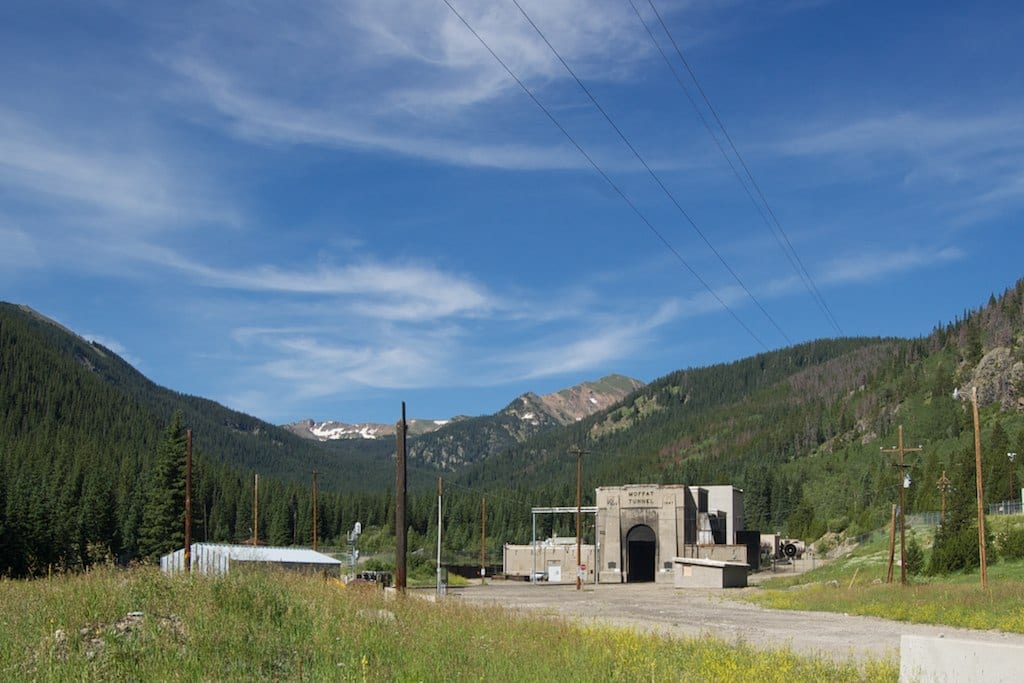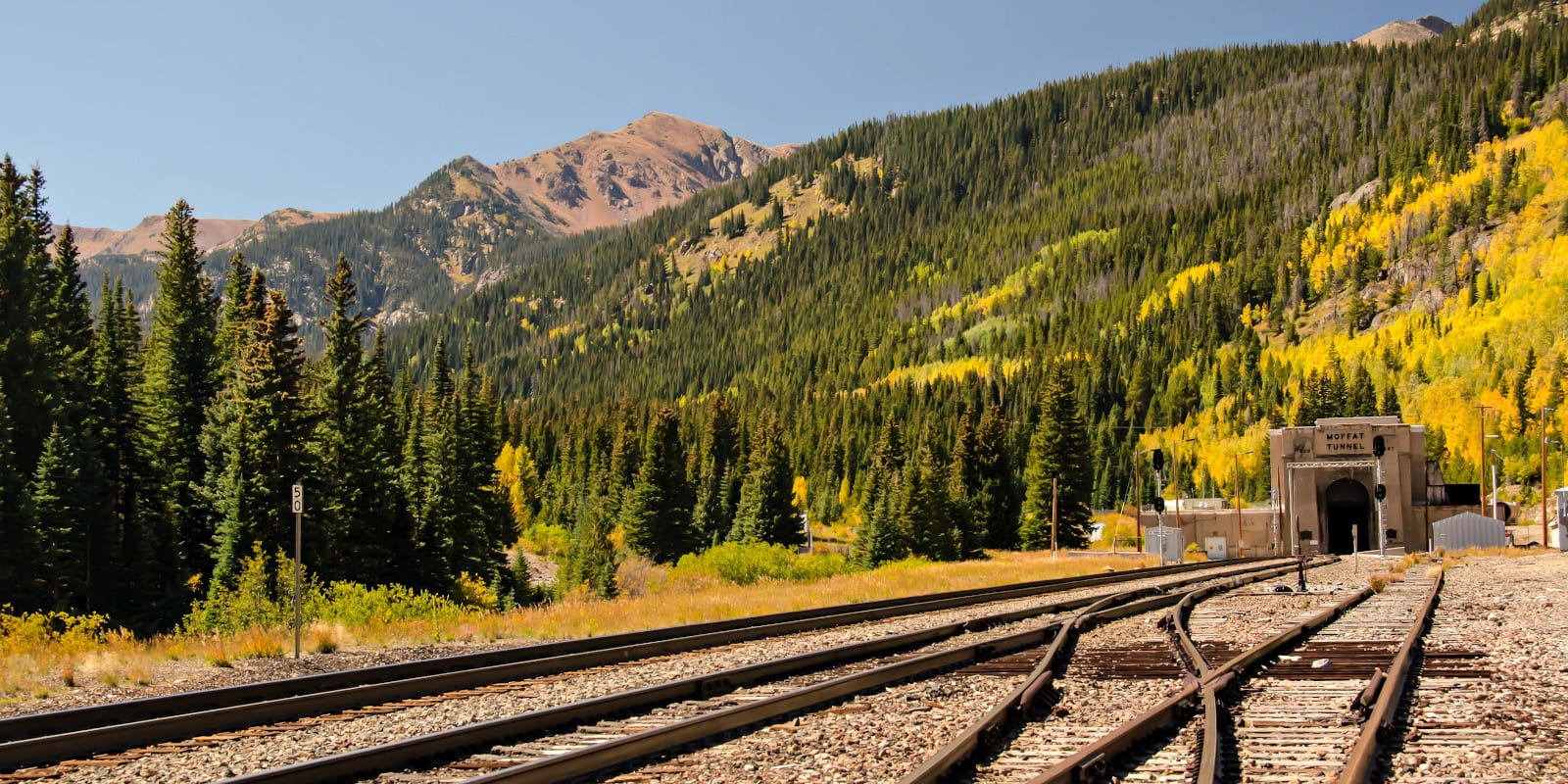Bridging the eastern and western slopes of the Rocky Mountains at an elevation of 9,200 feet and 2,800 feet below the surface, the Moffat Tunnel is an important water and rail connection. Though less well-known than the Eisenhower Tunnel, a trip to the Moffat Tunnel and the beautiful recreational land nearby is well worth it.
The eastern portal is about 50 miles west of Denver and 10 miles west of the town of Rollinsville. The western portal is near Winter Park Ski Resort. The East Portal has a lot of recreation around, attracting people throughout the summer and even winter months. It’s located near the James Peak Wilderness within the Arapaho and Roosevelt national forests.
History

When it was built in 1928, the Moffat Tunnel was the largest railroad tunnel in the Western Hemisphere at 6.2 miles. It is named in honor of David Moffat, a local railroad pioneer who attempted to raise enough funds for the tunnel’s construction before his death in 1911. It replaced the need for the earlier rail line over Rollins Pass.
The construction phase used innovative tunnel techniques, combining rail and water tunnels with its pioneer bore doubling permanent aqueduct. This carries water across the Continental Divide to Denver, having increased the city’s water supply by 30% at the time. Key innovations developed during construction, such as the Lewis traveling cantilever girder, were later used to support roofs and walls under unstable rock.
Construction was intensive with 800 men working around the clock for three and a half years and moving three billion of pounds of rock. 28 fatalities occurred during the construction with six workers dying in a single cave-in on July 30, 1926. The tunnel costs about 18 million dollars to build, funded by four bonds and concession profits.
Moffat Tunnel opened up a western link through the Rocky Mountains, cutting 173 miles off the trip between Denver and Salt Lake City. Other cities such as Cheyenne, Wyoming and Pueblo in southern Colorado already had rail access to the West Coast.
The tunnel’s first official traffic passed through in February 1928. Today, the tunnel continues to serve as a rail route for coal and freight and a water tunnel transporting water from the Pacific watershed. It averages 15 trains daily and the parallel water tunnel continues to deliver part of Denver’s water supply. The route also serves cross-country passengers traveling on Amtrak’s California Zephry train.
Activities

The west portal is adjacent to Winter Park Ski Resort, which has often been named among the best ski resort in North America. You’ll find a slew of things to do in the ski town of Winter Park.
Also known as the East Portal trailhead, the Moffat Tunnel trailhead offers access to an array of outdoor recreational activities. Each winter visitors can take part in backcountry skiing, ice climbing, snowmobiling and snowshoeing. There are no fees to visit the area and dogs are allowed. In the summer, hiking and 4×4 driving is popular on the trails. Camping at Moffat Tunnel is common on the east portal, with plenty of free, dispersed campsites.
Visitors can also see the five surviving East Portal Camp Cabins at the base of the James Peak Trail. These cabins housed the hundreds of workers who constructed the tunnel. They were listed as one of Colorado’s Most Endangered Places by Colorado Preservation, Inc. in January 2020.

Getting There
To get to the East Portal Trailhead, head south from Nederland on Colorado Highway 119 for about 4.5 miles. Turn west onto the gravel Gilpin County Road 16 and continue eight miles to the Moffat Tunnel. There is a large parking area at the trailhead.
Details
Address: East Portal – Co Rd 16, Rollinsville, CO 80474
Address: West Portal – 670 Winter Park Dr, Winter Park, CO 80482
Season: Year round
Length: 6.2 miles
Type: Railroad
Opened: 1928
Highest Elevation: 9,239 feet (2,816 m)
[sc name=”ad-activity-bottom”]

